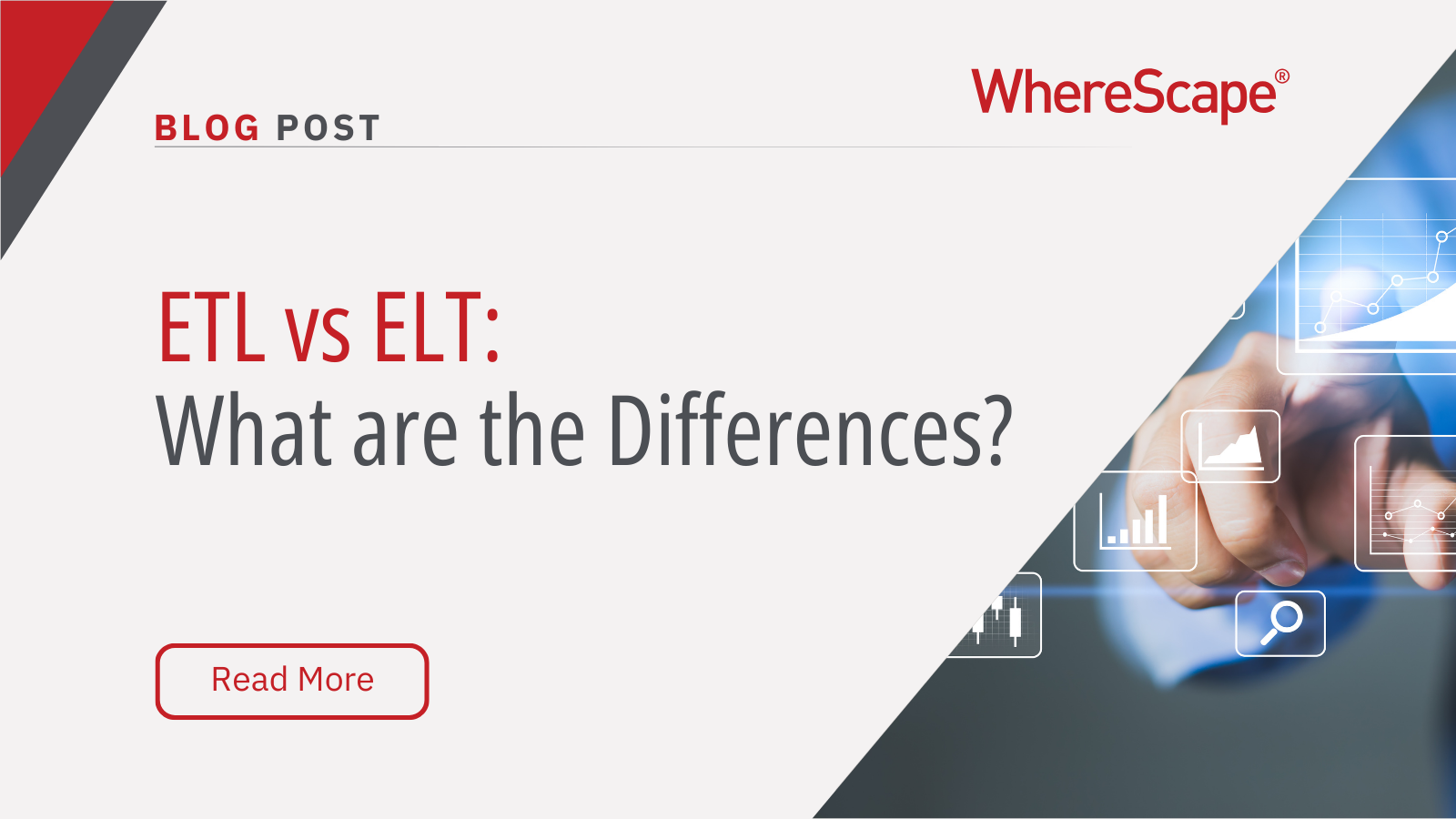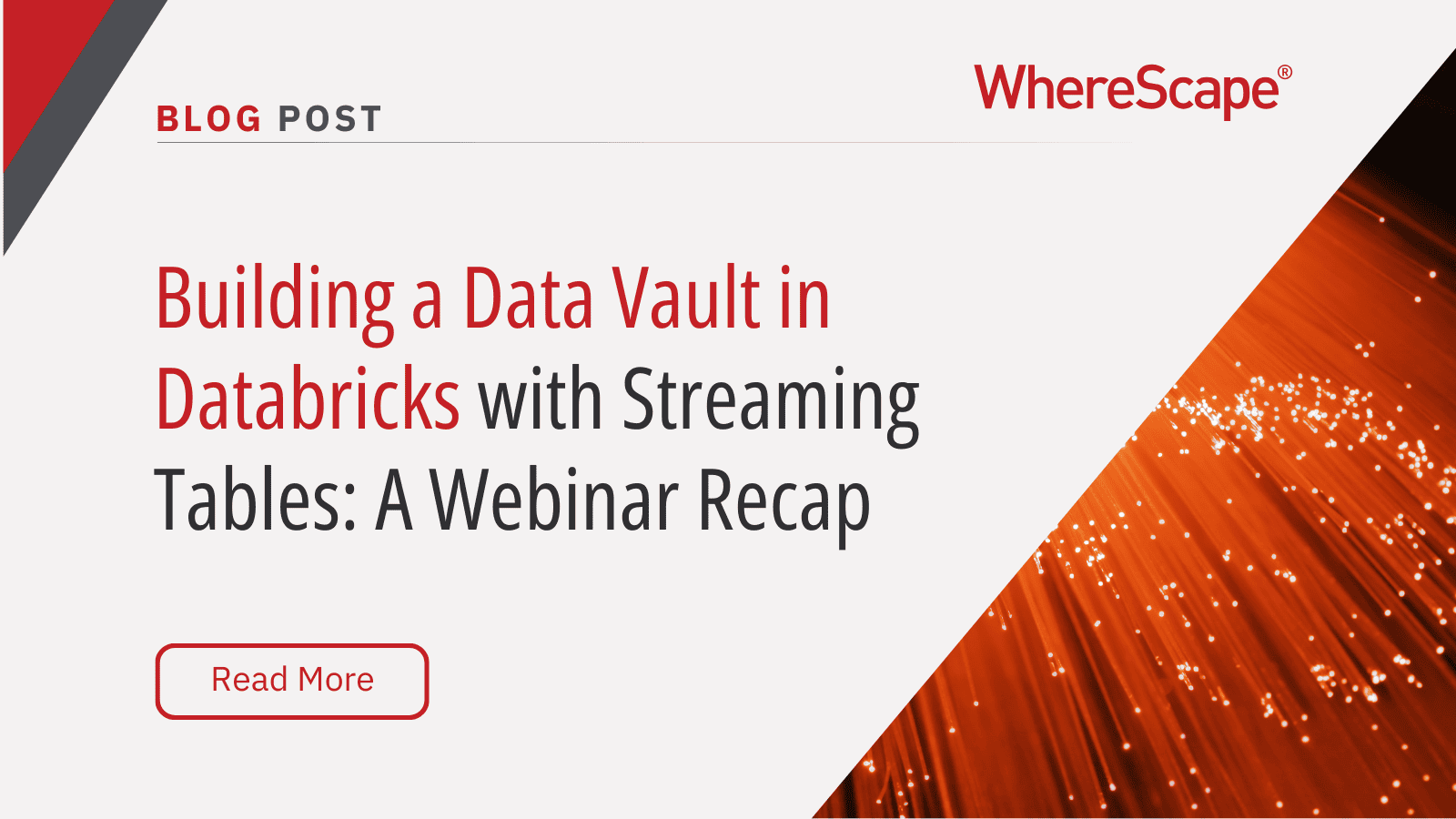Discover how-to unlock exciting new...
Why Quick Wins are the Bedrock of Data Delivery
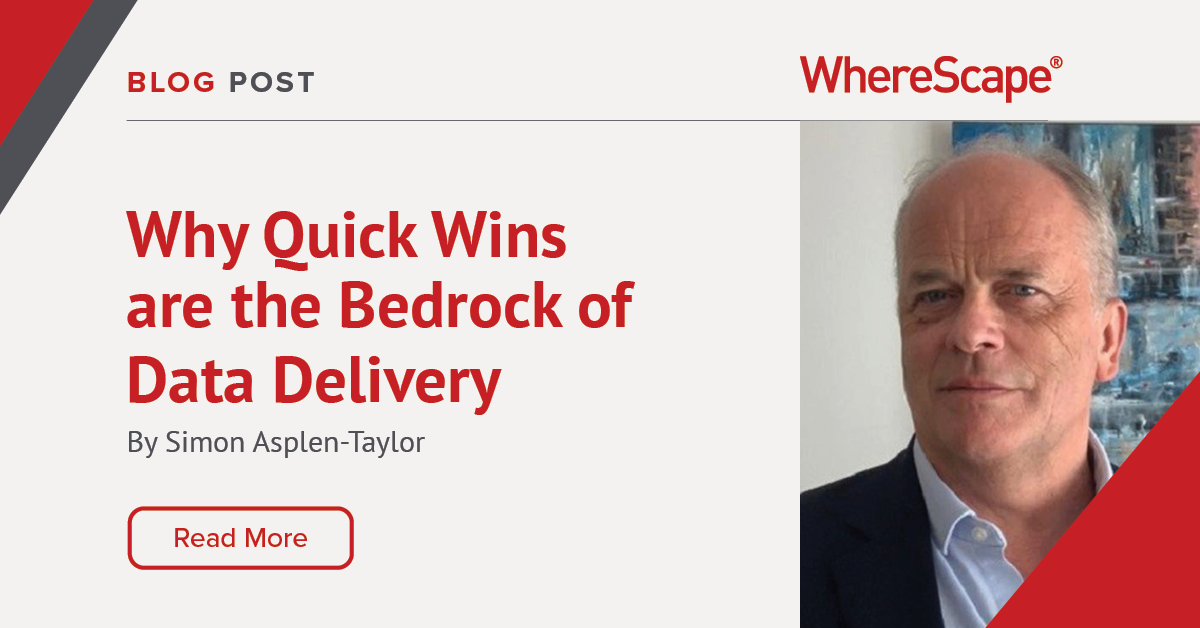
Quick win: An immediate improvement that delivers obvious value to the business. Because of the short deadline (two to three months), quick wins tend to be easy to implement but limited in scope. The best quick wins can be built on or repeated at a later date.
In 2009 the Corporate Executive Board surveyed 5,400 leaders who were new in their jobs. The survey asked these leaders what they were focusing on. Cleverly, they also asked the bosses of these leaders to rate their performance so far.
The responses were sorted into two groups: those whose bosses thought they were succeeding, and those whose bosses thought they were struggling. What was the difference?
What the Research Showed
The outcome of this research was written up in the Harvard Business Review. (Van Buren, M E and T Safferstone, 2009), “Among the high-performing new leaders, one attribute stood out,” the authors wrote, “a strong focus on results.”
Item one on every new manager’s to-do list is a quick win. The new leaders who had found themselves a quick win were rated 20% higher by their bosses than those who had not. As the article points out, a quick win reassures your boss that it was the right decision to give you the job, and it also sends a positive message to the people who are working for you (it’s OK to follow you because you know what you’re doing), and the people who work alongside you (you’re going to make a difference).
Great, but I’m in a data team, so what does this mean for me?
Delivering Value
One of the key factors that stands out in the success of any team is the ability to deliver value. This is as true of data teams as with any team. There are lots of things a data team can do – build data warehouses, data feeds, dashboards, reports, design and build data architecture, develop people capabilities, training, stakeholder engagement, analysis … the list goes on. These, however, are doing activities and are only relevant when they combine to deliver value to the business. By value to the business we mean one of five things, things that our CEO, CFO or COO would recognize. This means increasing revenue, reducing costs, reducing risk, increasing customer satisfaction, or increasing employee satisfaction. So when delivering a data capability you need to think about in the same way as your CEO. Talk their language.
Telling them that you have built some important data capability such as a data warehouse, data lake, or data vault will have little meaning. What it does do is beg question “So what?” The ‘So what’ here is very important. Turn this into “We’ve built a dataset that enables us to identify customers who are at risk of churning. We then share these data sets with the operations and sales teams delivering clear insight so they can respond in a timely manner to retain our customers.” This is far more relevant to the CEO, and a great quick win. Really what we mean is a quick ‘business’ win.
This may be one element of your data warehouse but it is by every definition a win for the business. So as you go about designing and building your data warehouse, it becomes a collection of wins. And we all know that a data warehouse has to be more than a collection of quick wins. Many ‘quick wins’ are not the same as a strategy. So whilst your design may need to be strategic, the functionality should be delivered through quick wins. Your CEO will then relate your data warehouse as a source of delivering business value rather than a technology delivery with a significant cost. Which would you prefer?
Quick Wins and Why they Work
So what’s the anatomy of a quick win?
A quick win must be quick, and by this three months or less is ideal. Think small. One thing that you are certain of delivering. Quick fails don’t count! So not the smartest, or shiniest project or someone’s pet project. Think about how you can scale the quick win afterward to more areas. Ensure that you take the learnings from it and share those with the business.
Imagine this scenario: “We reduced churn by 7%, so now we can do the same for the other business areas.” Think about using the quick win to leverage your strategic, but hard-to-sell data initiatives. Try this version of the same message: “We reduced churn by 7%, but had the data quality been better we could have reduced it by 12%. So now we recommend working on data quality in the next phase.” This is a great way to kick start your data quality initiatives. Imagine how you can use a quick win to kick start your data governance, data warehouse or other initiatives that are harder to sell?
So in summary, quick wins deliver value, which in turn drives the success of your teams which may help underpin your strategic data initiatives. Whether you are just starting out, or need to reinvigorate your data activities quick wins and talking about them in a language your CEO will understand are the bedrock of your data delivery.
ETL vs ELT: What are the Differences?
In working with hundreds of data teams through WhereScape’s automation platform, we’ve seen this debate evolve as businesses modernize their infrastructure. Each method, ETL vs ELT, offers a unique pathway for transferring raw data into a warehouse, where it can be...
Dimensional Modeling for Machine Learning
Kimball’s dimensional modeling continues to play a critical role in machine learning and data science outcomes, as outlined in the Kimball Group’s 10 Essential Rules of Dimensional Modeling, a framework still widely applied in modern data workflows. In a recent...
Automating Data Vault in Databricks | WhereScape Recap
Automating Data Vault in Databricks can reduce time-to-value by up to 70%—and that’s why we hosted a recent WhereScape webinar to show exactly how. At WhereScape, modern data teams shouldn't have to choose between agility and governance. That's why we hosted a live...
WhereScape Recap: Highlights From Big Data & AI World London 2025
Big Data & AI World London 2025 brought together thousands of data and AI professionals at ExCeL London—and WhereScape was right in the middle of the action. With automation taking center stage across the industry, it was no surprise that our booth and sessions...
Why WhereScape is the Leading Solution for Healthcare Data Automation
Optimizing Healthcare Data Management with Automation Healthcare organizations manage vast amounts of medical data across EHR systems, billing platforms, clinical research, and operational analytics. However, healthcare data integration remains a challenge due to...
WhereScape Q&A: Your Top Questions Answered on Data Vault and Databricks
During our latest WhereScape webinar, attendees had fantastic questions about Data Vault 2.0, Databricks, and metadata automation. We’ve compiled the best questions and answers to help you understand how WhereScape streamlines data modeling, automation, and...
What is Data Fabric? A Smarter Way for Data Management
As of 2023, the global data fabric market was valued at $2.29 billion and is projected to grow to $12.91 billion by 2032, reflecting the critical role and rapid adoption of data fabric solutions in modern data management. The integration of data fabric solutions...
Want Better AI Data Management? Data Automation is the Answer
Understanding the AI Landscape Imagine losing 6% of your annual revenue—simply due to poor data quality. A recent survey found that underperforming AI models, built using low-quality or inaccurate data, cost companies an average of $406 million annually. Artificial...
RED 10: The ‘Git Friendly’ Revolution for CI/CD in Data Warehousing
For years, WhereScape RED has been the engine that powers rapidly built and high performance data warehouses. And while RED 10 has quietly empowered organizations since its launch in 2023, our latest 10.4 release is a game changer. We have dubbed this landmark update...
The Assembly Line for Your Data: How Automation Transforms Data Projects
Imagine an old-fashioned assembly line. Workers pass components down the line, each adding their own piece. It’s repetitive, prone to errors, and can grind to a halt if one person falls behind. Now, picture the modern version—robots assembling products with speed,...
Related Content
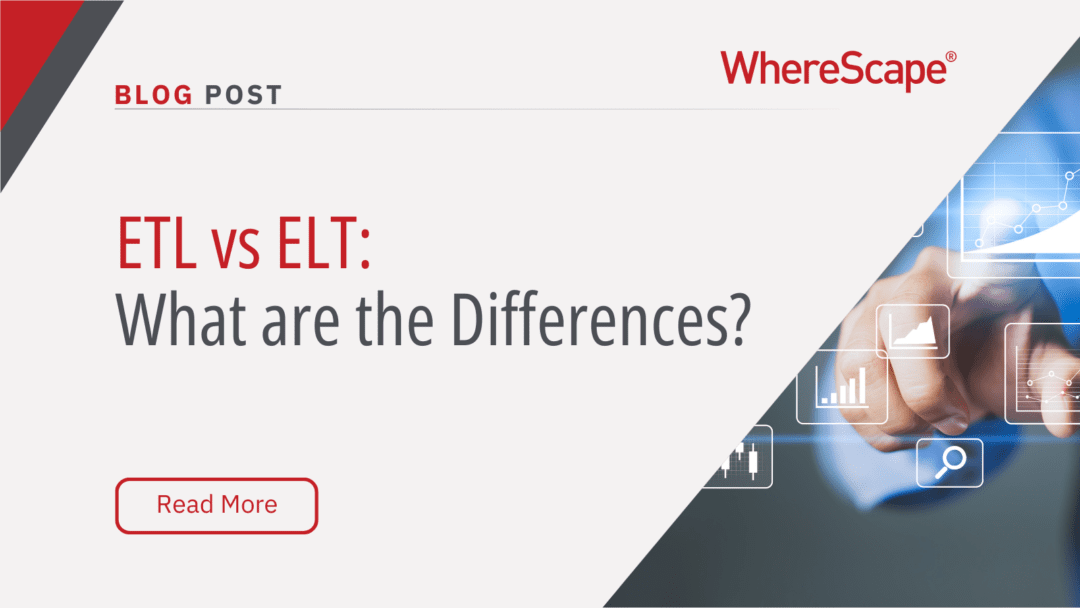
ETL vs ELT: What are the Differences?
In working with hundreds of data teams through WhereScape’s automation platform, we’ve seen this debate evolve as businesses modernize their infrastructure. Each method, ETL vs ELT, offers a unique pathway for transferring raw data into a warehouse, where it can be...

Dimensional Modeling for Machine Learning
Kimball’s dimensional modeling continues to play a critical role in machine learning and data science outcomes, as outlined in the Kimball Group’s 10 Essential Rules of Dimensional Modeling, a framework still widely applied in modern data workflows. In a recent...
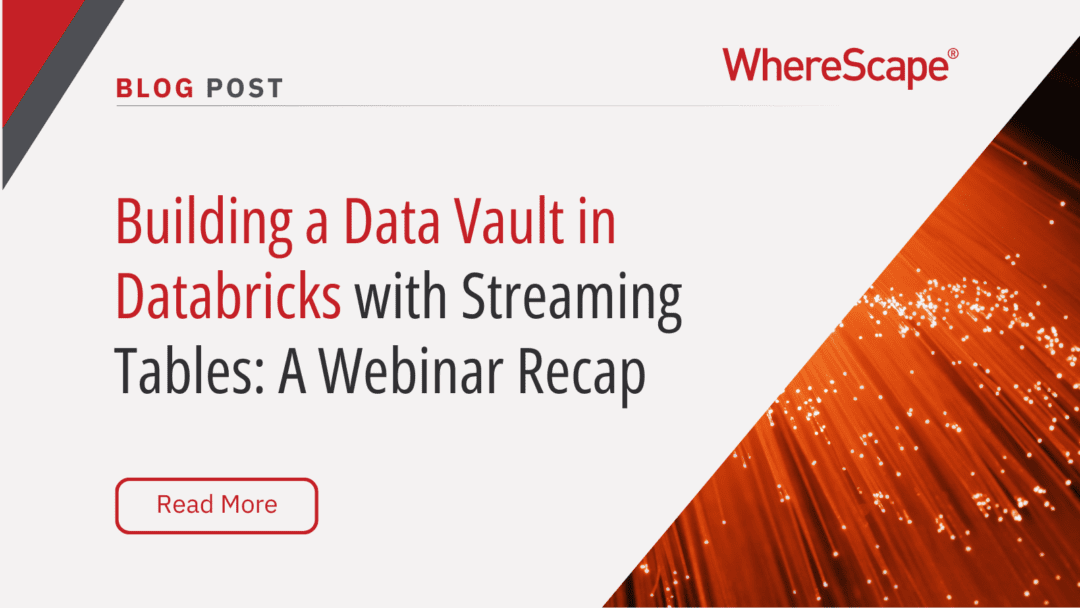
Automating Data Vault in Databricks | WhereScape Recap
Automating Data Vault in Databricks can reduce time-to-value by up to 70%—and that’s why we hosted a recent WhereScape webinar to show exactly how. At WhereScape, modern data teams shouldn't have to choose between agility and governance. That's why we hosted a live...
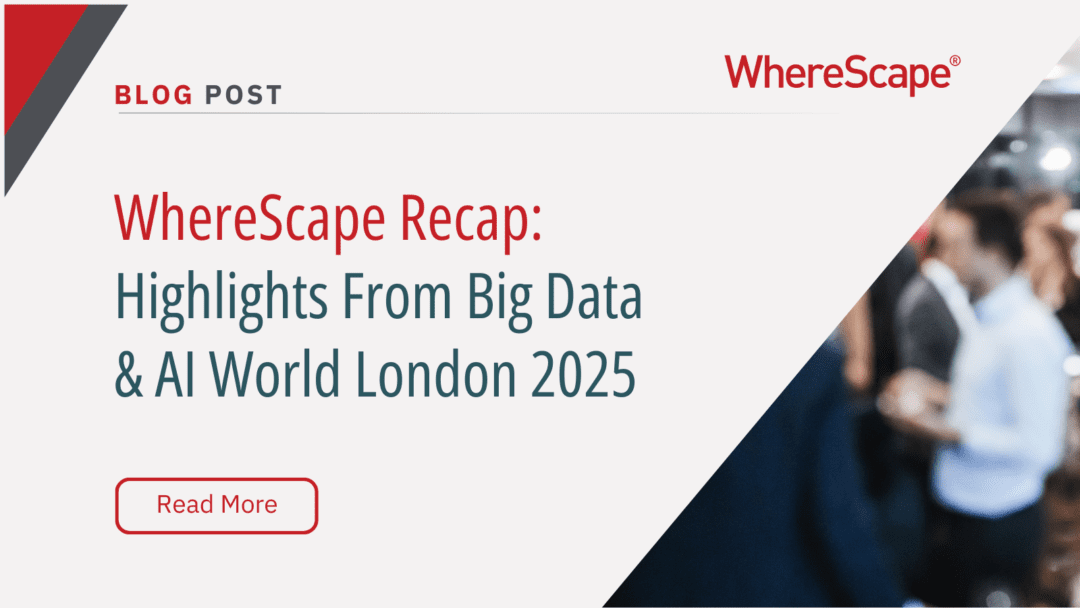
WhereScape Recap: Highlights From Big Data & AI World London 2025
Big Data & AI World London 2025 brought together thousands of data and AI professionals at ExCeL London—and WhereScape was right in the middle of the action. With automation taking center stage across the industry, it was no surprise that our booth and sessions...


